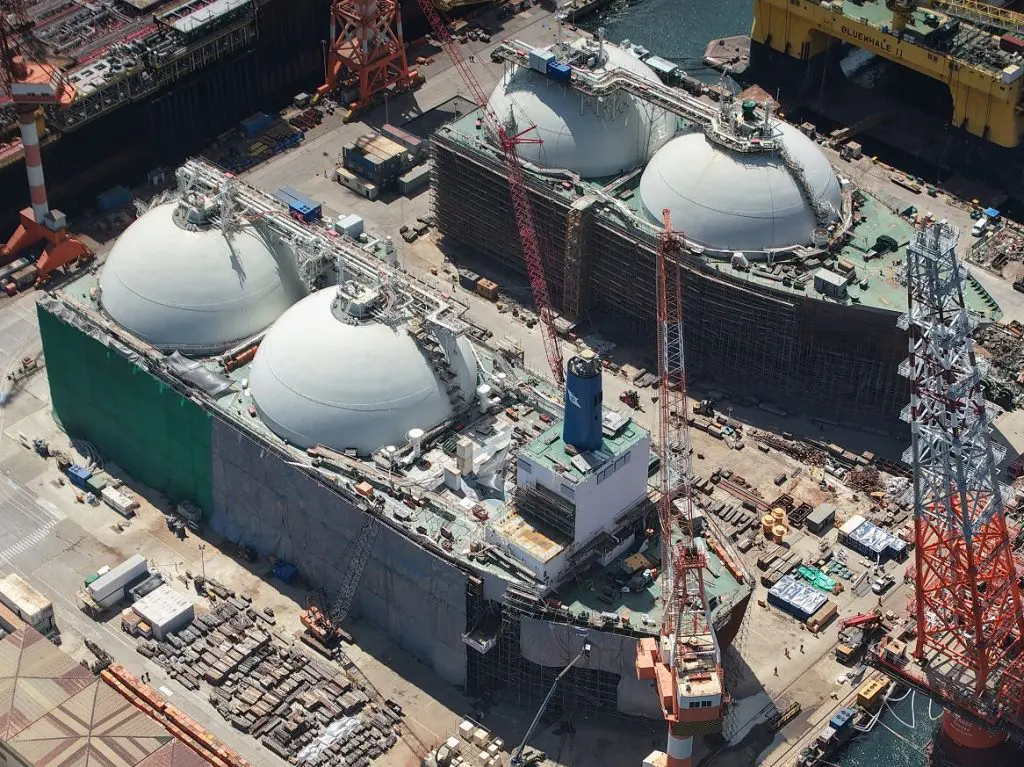This story requires a subscription
This includes a single user license.
Golar revealed this in its second-quarter results report on Thursday.
The company said it had increased its focus on securing “attractive” FLNG growth units, following 20-year charter deals in Argentina for FLNG Hilli Episeyo and the MKII FLNG, currently under conversion at CIMC Raffles shipyard in Yantai, China.
In addition, FLNG Gimi reached the commercial operations date (COD) for its 20-year lease and operate agreement for the BP-led Greater Tortue Ahmeyim (GTA) project, offshore Mauritania and Senegal
“We are working with three prospective shipyards for different FLNG designs (MKI, MKII, and MKIII with liquefaction capacities ranging from 2.0 to 5.4 mtpa) to obtain updated EPC price and delivery schedules,” the company said in the quarterly report.
“We see increasing industry recognition of the benefits of FLNG solutions versus land-based liquefaction terminals, driven by the proven track record of the fleet on the water, lower capex, shorter construction time, and increased flexibility,” Golar said.
This in turn drives prospective charter interest in Golar’s FLNG solutions, Golar noted.
“Only available FLNG capacity within this decade”
Based on the increasing demand for FLNG to monetize stranded, associated, and flared or re-injected gas reserves, Golar plans to order its next FLNG before locking in a charter to drive competitive tension and terms for its next FLNG project.
This is the same approach executed for FLNG Hilli and for MKII FLNG.
“Based on yard availability, we are confident that a contemplated 4th Golar FLNG will be the only open and available FLNG capacity within this decade,” the company said.
Golar expects to decide on vessel design for its fourth FLNG once final EPC prices and delivery schedules are obtained.
“We are in parallel working on the commercial pipeline to match commercial opportunities to the contemplated fleet addition. We also expect that a 5th unit could follow shortly after a 4th unit has been ordered and chartered,” it said.
Golar said in May that it was working with shipyards to order one or more floating LNG production units in 2025.
After that, it signed a final engineering study to confirm EPC price and delivery for a 5 mtpa MKIII FLNG.
If confirmed, the 5 mtpa FLNG would be the world’s largest FLNG.
Yards
Golar’s CEO Karl Staubo noted during the earnings call later on Thursday that both Hilli and Gimi were built at Singapore’s Seatrium.
And if Golar is to proceed with an MKI FLNG with a capacity of 2 to 2.7 mtpa, “that’s the likely shipyard selection” for the company’s next FLNG.
“We are currently working with Seatrium to confirm an updated EPC price and delivery schedule,” he said.
Moreover, Golar has an option for a second MKII FLNG with a capacity of up to 3.5 mtpa with CIMC Raffles.
The MKIII has a capacity of up to 5.4 mtpa and includes a newbuild vessel built by South Korea’s Samsung Heavy.
Potential donor vessels
In terms of delivery, Golar sees “around 38 months for the first two and 48 months for the MKIII given that you start from scratch and not with a conversion vessel,” Staubo said.
“We’ve also signed agreements with Samsung Heavy Industries to develop updated pricing and delivery schedule if we are to order such a vessel within this year,” he said.
“As explained earlier in the presentation, we expect to get the final price and delivery schedule in the coming months and thereafter make a design decision for where we will continue with our fourth unit,” he said.
Staubo also said that Golar sees increasing long-lead times for critical components, which is why it plans on securing slot reservations within the third quarter.
“During the quarter, we have also completed inspections for potential donor vessels should we continue with an MKI and MKII FLNG conversion,” Staubo noted.
“If we do secure charter of a contemplated fourth unit, we expect to rapidly thereafter order a fifth unit, which is why we’re progressing yard discussions with all three yards at the moment,” he said.
Asked about the interest in different FLNG sizes, he said that “most of the opportunities we are discussing in West Africa are likely MKI or II.”
“And then some of the projects we are discussing in South America and in the Middle East could be an MKIII,” Staubo said.
“So that’s sort of broadly where we see it. Naturally, just given size and throughput, there are more commercial opportunities for smaller sizes,” he said.
Results
Golar reported second-quarter net income attributable to Golar of $16 million, adjusted Ebitda of $49 million, and total Golar cash $891 million.
The company added $13.7 billion in adjusted Ebtda backlog, with further upside in contracted FLNG tariff CPI escalation and “significant” commodity upside.
Golar’s board of directors approved a total second-quarter dividend of $0.25 per share to be paid on or around September 2.

